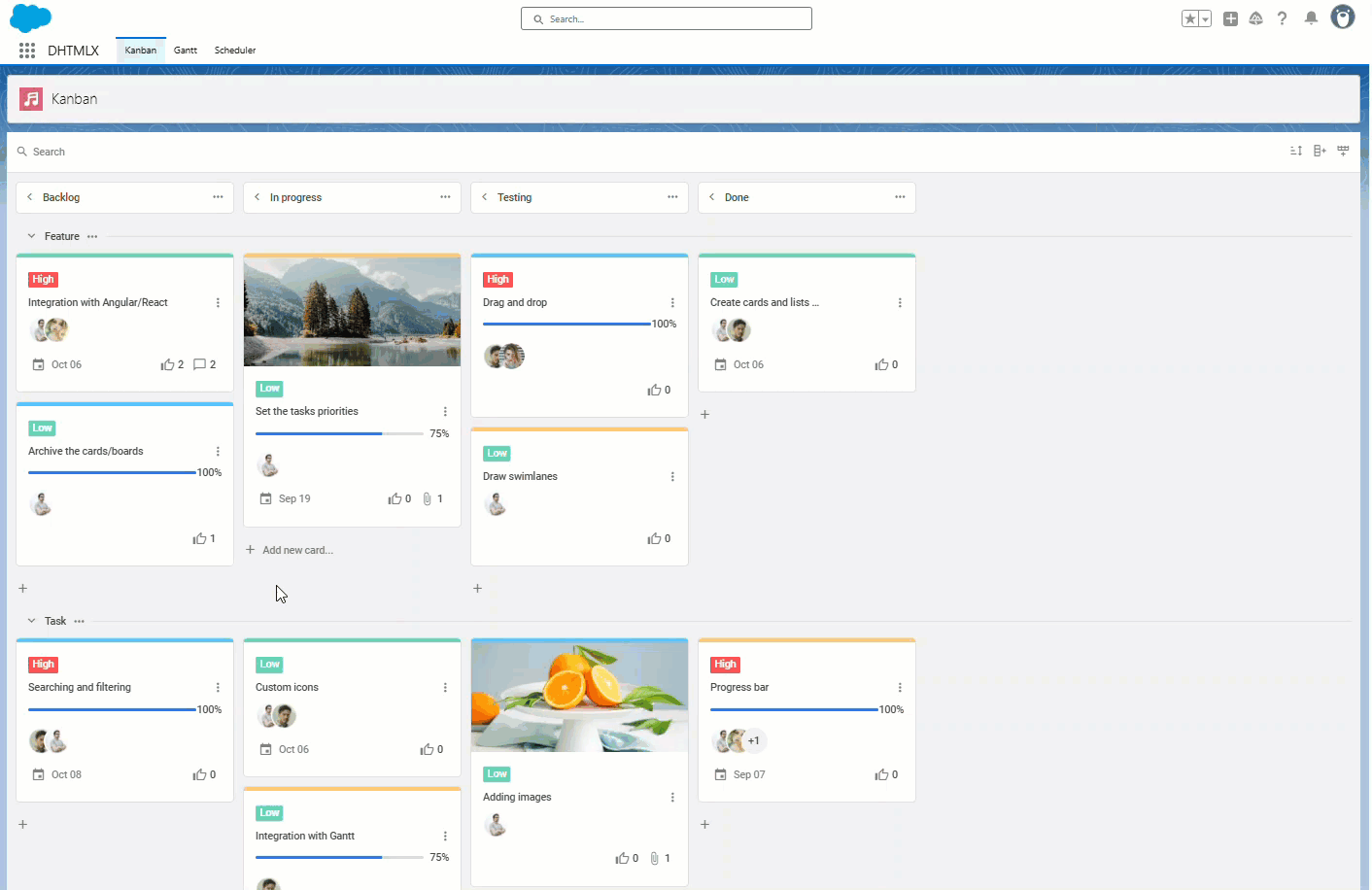Once known primarily as a leading CRM system, Salesforce has evolved into a platform that supports custom application development. It offers a range of backend services, cloud infrastructure, and a modern UI programming model (LWC). No wonder developers want to use DHTMLX UI components in Salesforce. And we do not ignore this trend.
Today, we are happy to announce that our JavaScript Kanban component can now be seamlessly integrated with the Salesforce Lightning environment. The new DHTMLX Kanban 1.7 is shipped with an integration demo dedicated to helping teams achieve this goal without any trouble. Also, the release brings a range of API changes and fixes added to make the overall experience with Kanban even smoother.
In this article, we highlight the key points of adding DHTMLX Kanban to Salesforce LWC.
Bringing DHTMLX Kanban to the Salesforce Environment
Developers usually choose DHTMLX Kanban to deliver a feature-packed taskboard that facilitates task management, boosts team collaboration, and provides a general overview of project workflows on the web. The new integration demo vividly demonstrates how to bring the power of DHTMLX Kanban to Salesforce by embedding the component into the Lightning Web Components (LWC) architecture.
As a result, it will enable developers to create DHTMLX-based taskboards enriched with various features (e.g., drag-and-drop, task assignments, comments, file attachments, voting, and priority management) within the Salesforce ecosystem, as shown in the example below.
Please, use the following credentials to access the live demo: Username: user, Password: demo
The complete demo project is available on GitHub.
From a practical standpoint, the GitHub repository guides you through the main setup steps, from configuring the environment and defining custom objects for Kanban data storage to handling server-side data operations (CRUD operations and advanced Kanban features). All Kanban entities (cards, columns, attachments, etc.) are stored in Salesforce custom objects, ensuring full compliance with the Salesforce data model and security standards.
When the environment is ready, the Kanban component automatically detects that it is running within Salesforce and adjusts the configuration accordingly, simplifying the entire integration process. In other words, all you have to do is specify the attributes for adding DHTMLX to the LWC container, import the Kanban (and optionally the Toolbar widget), and initialize it. After that, the Kanban will take care of the rest required for the Kanban integration in Salesforce.
As a result, instead of handling complex settings, you can focus on modifying the look and feel of the taskboard via the standard Kanban API to meet the project requirements.
For more technical details on how DHTMLX Kanban behaves within the Salesforce environment, refer to this tutorial in the Kanban documentation.
In the GitHub repository, you’ll find all necessary project files, including Apex controllers, predefined custom objects, and the LWC component with configuration files. In addition, we also provide recommendations on handling common issues that might occur during the integration.
The new Kanban demo is a great addition to the already available integrations of DHTMLX Gantt with Salesforce and DHTMLX Scheduler with Salesforce. Thus, you’ll be able to create versatile Salesforce project management apps using the rich APIs of DHTMLX components.
In addition to a new integration option, DHTMLX Kanban 1.7 also includes plenty of API adjustments and bug fixes to facilitate your experience with the component. Check out the “What’s New” section to learn the details. These changes should also be considered during the migration process to v1.7.
Take time to test the updated DHTMLX Kanban by downloading a free 30-day trial version. Current clients can access the latest version in their Client’s Area.
